Abstract
Benzylpenicillin acylase, which hydrolyzes benzylpenicillin to 6-aminopenicillanic acid, was found to be widely distributed among members of the Schizomycetes, particularly in gram-negative bacteria, and in the genus Nocardia. The hydrolysis of a series of biosynthetic and semisynthetic penicillins by freeze-dried cells of a strain of Nocardia and of Proteus was studied. Benzylpenicillin was the preferred substrate; all departures from the benzylpenicillin side-chain structure led to reduction of substrate activity (the greater the departure, the greater the reduction in activity). Penicillin amides and methyl esters were also hydrolyzed, as were suitable N-acyl derivatives of 7-aminocephalosporanic acid. Occurrence of an enzyme activity which hydrolyzes benzylpenicillinamide to benzylpenicillin was detected in certain strains of yeasts.
Full text
PDF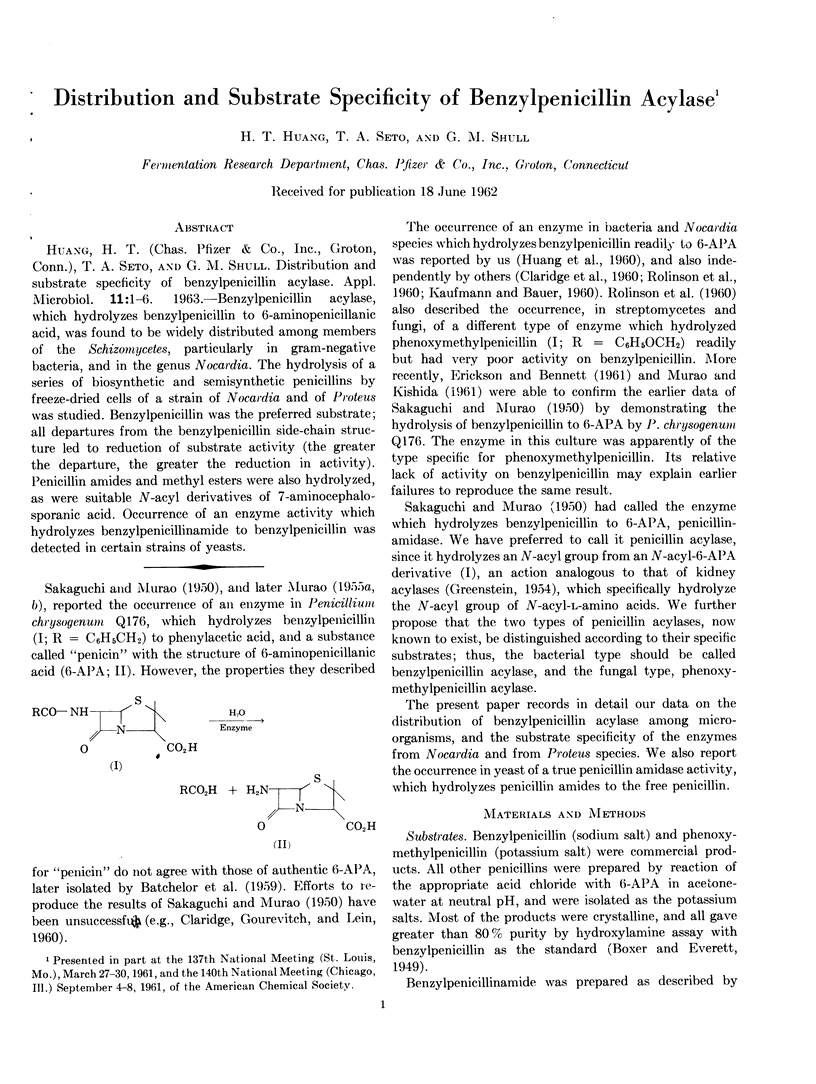
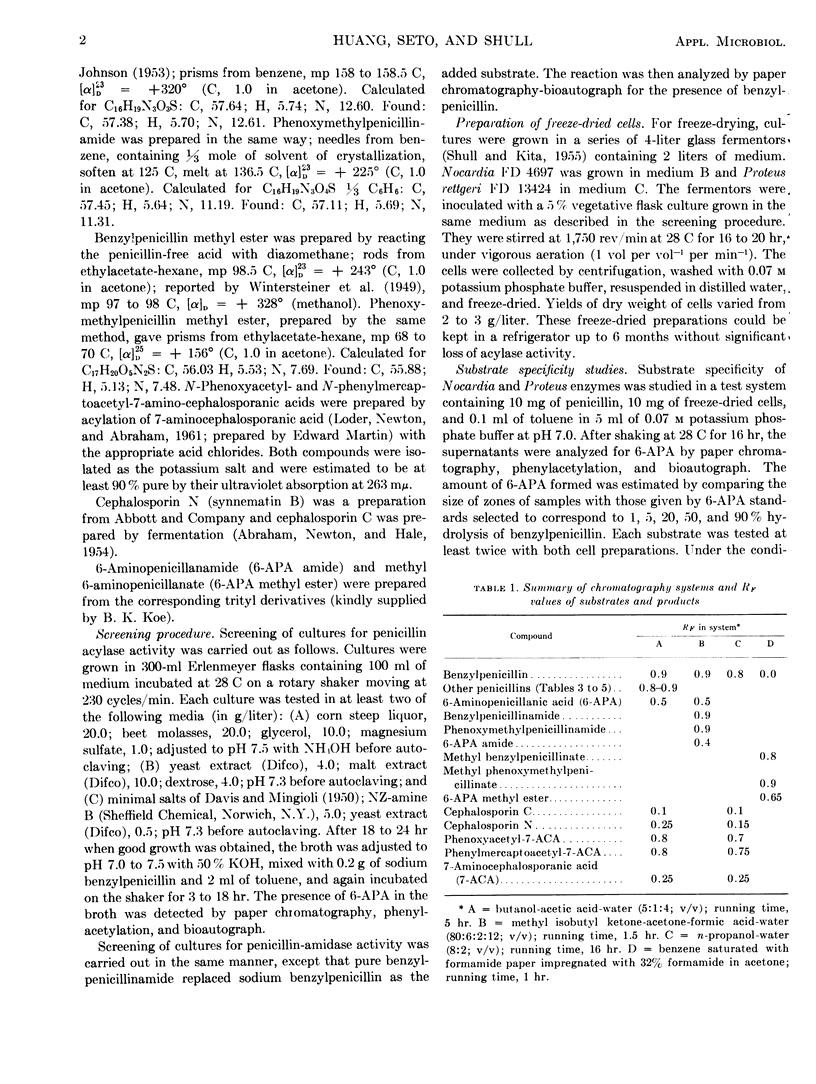
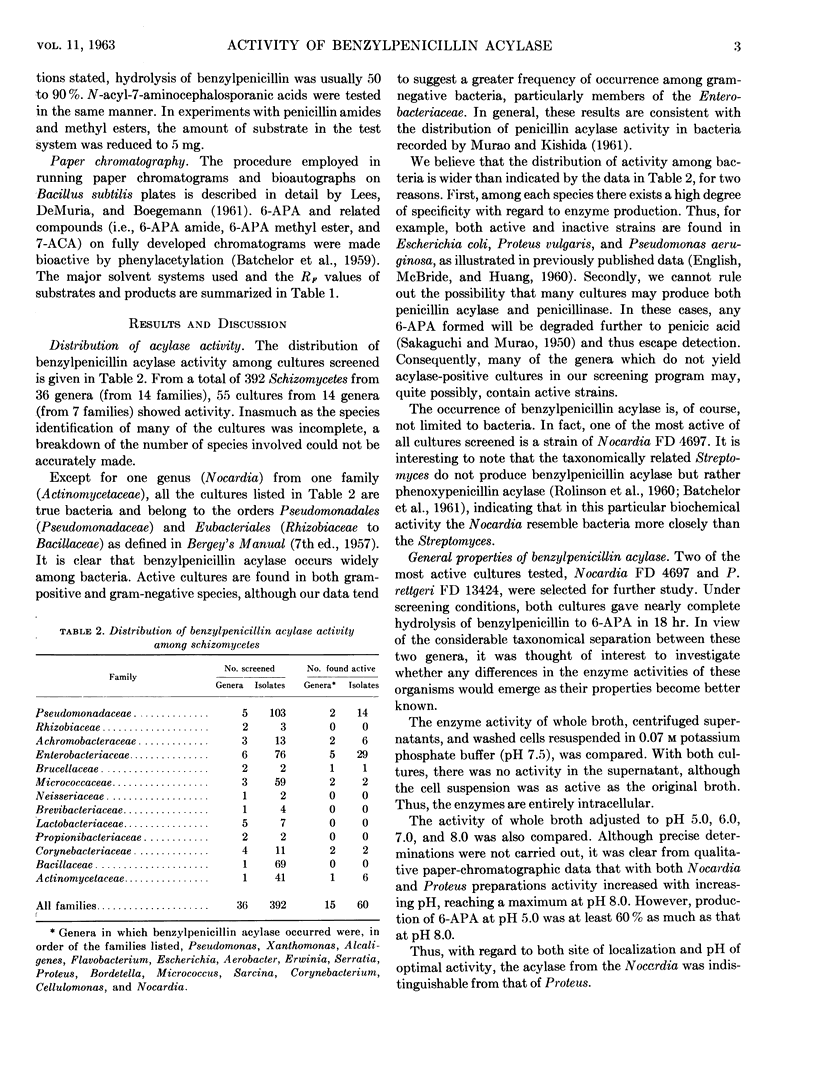
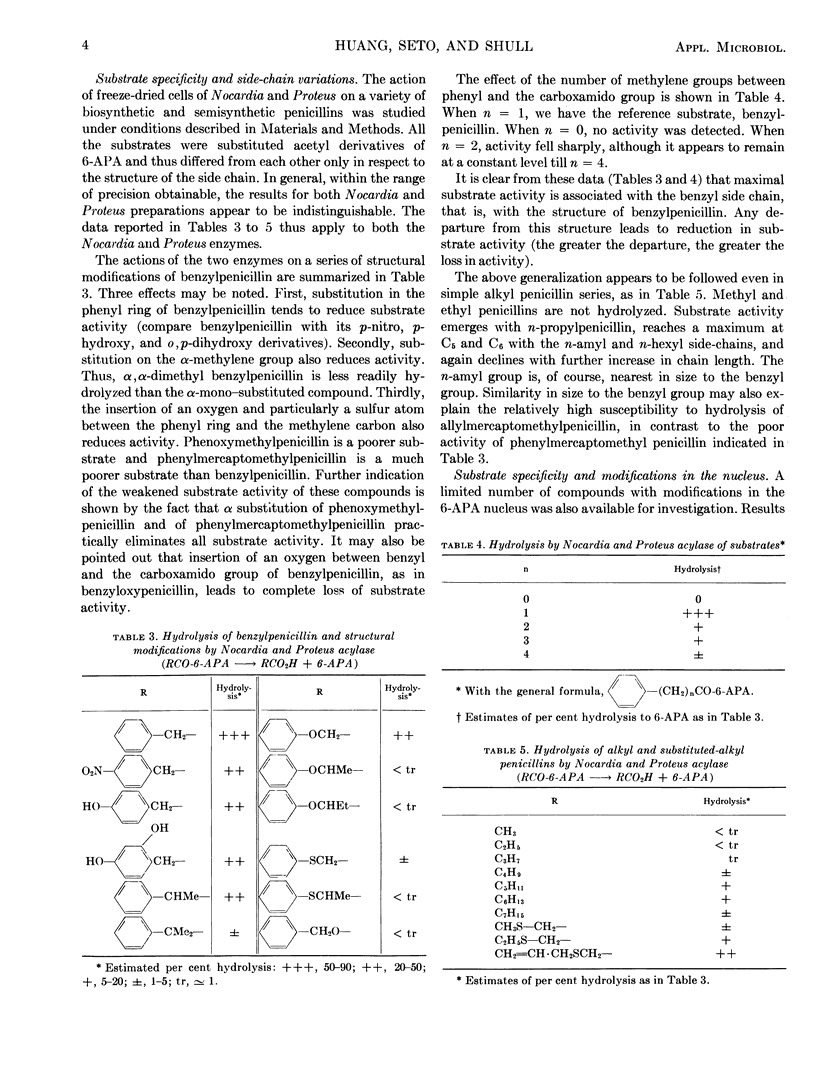
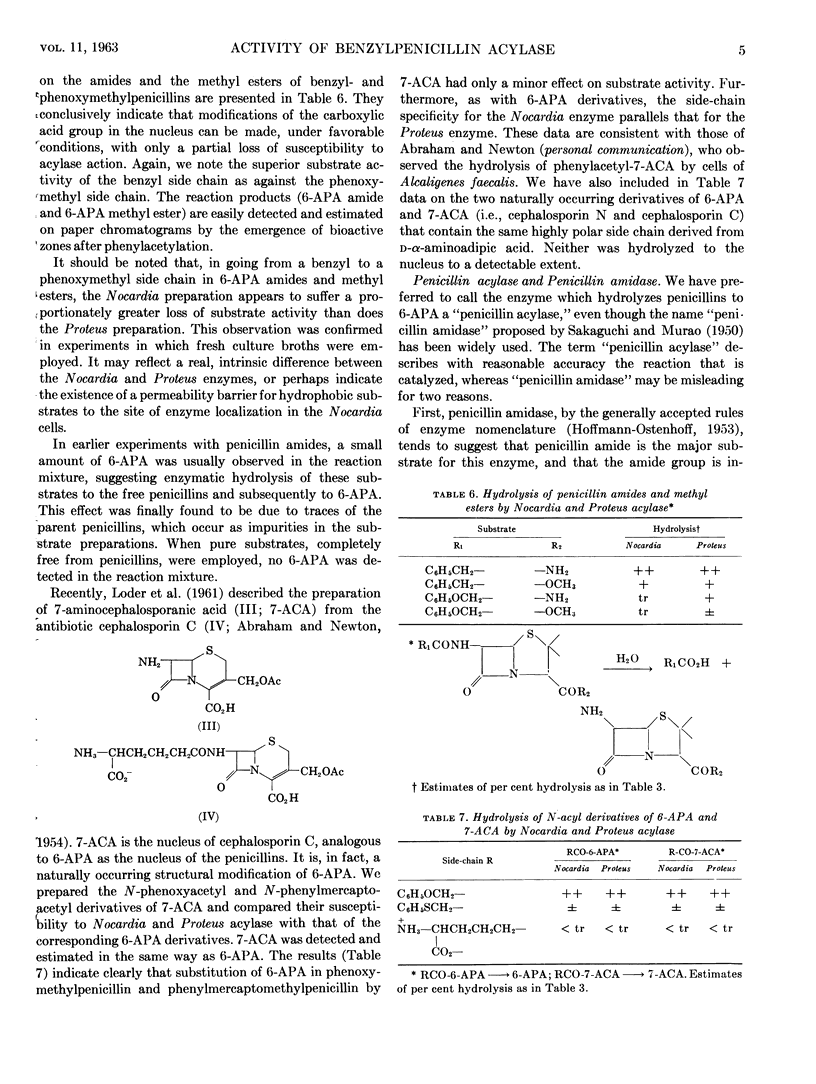
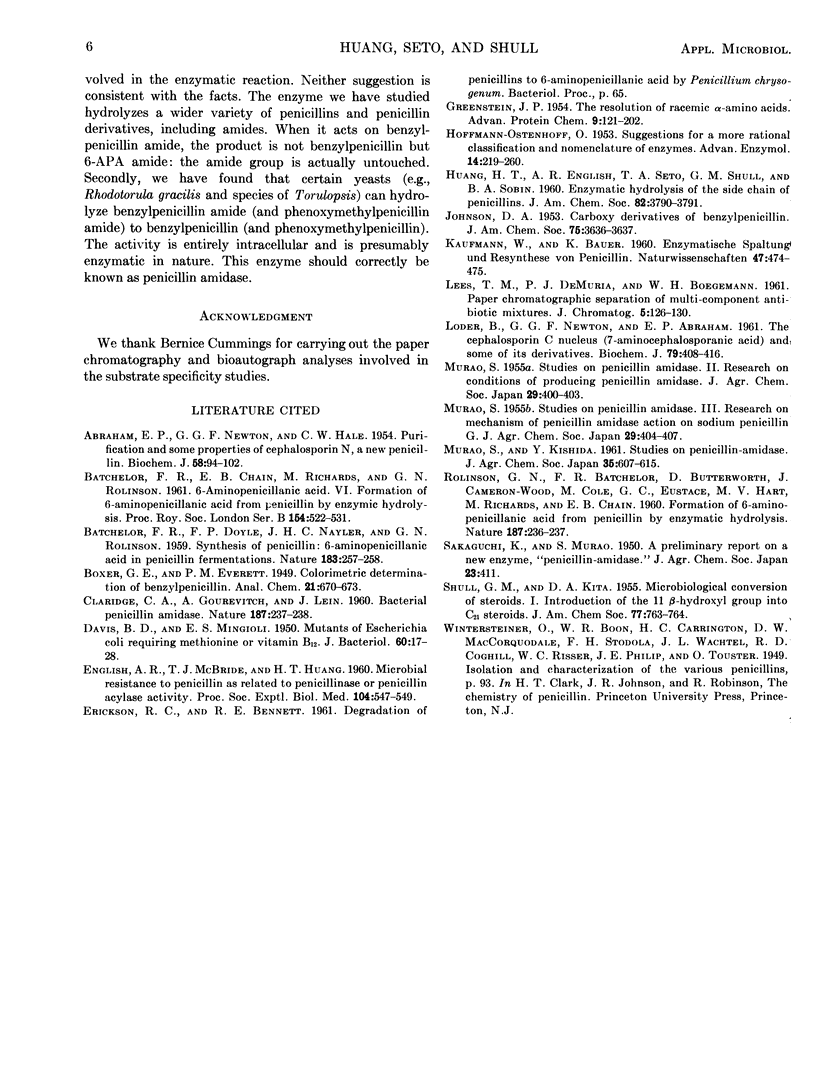
Selected References
These references are in PubMed. This may not be the complete list of references from this article.
- ABRAHAM E. P., NEWTON G. G. Purification and some properties of cephalosporin N, a new penicillin. Biochem J. 1954 Sep;58(1):94–102. doi: 10.1042/bj0580094. [DOI] [PMC free article] [PubMed] [Google Scholar]
- BATCHELOR F. R., CHAIN E. B., RICHARDS M., ROLINSON G. N. 6-Aminopenicillanic acid. VI. Formation of 6-aminopenicillanic acid from penicillin by enzymic hydrolysis. Proc R Soc Lond B Biol Sci. 1961 Aug 15;154:522–531. doi: 10.1098/rspb.1961.0050. [DOI] [PubMed] [Google Scholar]
- BATCHELOR F. R., DOYLE F. P., NAYLER J. H., ROLINSON G. N. Synthesis of penicillin: 6-aminopenicillanic acid in penicillin fermentations. Nature. 1959 Jan 24;183(4656):257–258. doi: 10.1038/183257b0. [DOI] [PubMed] [Google Scholar]
- CLARIDGE C. A., GOUREVITCH A., LEIN J. Bacterial penicillin amidase. Nature. 1960 Jul 16;187:237–238. doi: 10.1038/187237a0. [DOI] [PubMed] [Google Scholar]
- DAVIS B. D., MINGIOLI E. S. Mutants of Escherichia coli requiring methionine or vitamin B12. J Bacteriol. 1950 Jul;60(1):17–28. doi: 10.1128/jb.60.1.17-28.1950. [DOI] [PMC free article] [PubMed] [Google Scholar]
- ENGLISH A. R., McBRIDE T. J., HUANG H. T. Microbial resistance to penicillin as related to penicillinase or penicillin acylase activity. Proc Soc Exp Biol Med. 1960 Aug-Sep;104:547–549. doi: 10.3181/00379727-104-25903. [DOI] [PubMed] [Google Scholar]
- GREENSTEIN J. P. The resolution of racemic alpha-amino acids. Adv Protein Chem. 1954;9:121–202. doi: 10.1016/s0065-3233(08)60206-5. [DOI] [PubMed] [Google Scholar]
- LODER B., NEWTON G. G., ABRAHAM E. P. The cephalosporin C nucleus (7-aminocephalosporanic acid) and some of its derivatives. Biochem J. 1961 May;79:408–416. doi: 10.1042/bj0790408. [DOI] [PMC free article] [PubMed] [Google Scholar]
- ROLINSON G. N., BATCHELOR F. R., BUTTERWORTH D., CAMERON-WOOD J., COLE M., EUSTACE G. C., HART M. V., RICHARDS M., CHAIN E. B. Formation of 6-aminopenicillanic acid from penicillin by enzymatic hydrolysis. Nature. 1960 Jul 16;187:236–237. doi: 10.1038/187236a0. [DOI] [PubMed] [Google Scholar]


